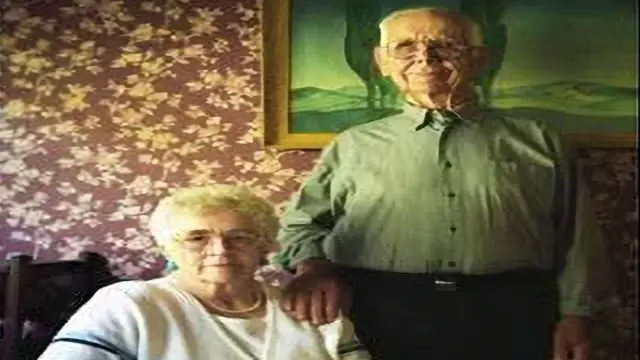In the mid-20th century, one doctor pushed the boundaries of psychiatric treatment—Walter Freeman. Known for his controversial use of the lobotomy, Freeman’s method involved inserting an ice pick-like tool into a patient’s brain. His goal was to “calm troubled minds.” However, the results were often tragic.
What is a Lobotomy?
Lobotomy, also called leucotomy, involves cutting or destroying part of the prefrontal cortex—the region of the brain responsible for decision-making and emotional responses. The procedure was thought to treat mental illness by severing connections between different parts of the brain. However, lobotomy often left patients emotionless and without drive.
The Origins of the Ice Pick Surgery
Lobotomy wasn’t Freeman’s invention. The procedure traces back to António Egas Moniz, a Portuguese physician who performed the first lobotomy in 1918. Moniz believed it helped relieve symptoms in some patients but acknowledged its risks, including personality changes and cognitive impairment. In 1939, a disgruntled patient shot Moniz multiple times, though he survived.
Moniz’s work inspired Walter Freeman, an American physician born in 1895, to develop his own technique. Freeman wasn’t a trained surgeon, yet he believed he could revolutionize psychiatric care. Partnering with neurosurgeon James Watts, Freeman adapted Moniz’s technique into a faster, simpler method. He eventually began performing lobotomies alone, using an ice pick, which he later renamed a leucotome, for the procedure.
Freeman’s Controversial Rise
Freeman performed his first lobotomy on Alice Hammatt in 1936. Alice was 63 and struggling with depression and suicidal thoughts. When she learned the details of the surgery, she withdrew her consent. Despite this, Freeman performed the lobotomy. Alice reportedly screamed, “Who is that man? What does he want here? What’s he going to do with me?” before Freeman silenced her fears—permanently. Post-surgery, Alice became emotionally numb but no longer exhibited her previous symptoms. Her husband was pleased with the results, though Alice’s own feelings remained unknown.
By the 1940s and 1950s, Freeman had earned a reputation for performing lobotomies across the country. Traveling in a van he dubbed the “Lobotomobile,” Freeman toured mental hospitals, performing his ice pick surgery on thousands of patients. He reportedly performed nearly 3,500 lobotomies in 23 states.
Freeman’s showmanship was undeniable. He often demonstrated his skills in front of doctors, inserting a leucotome into both eye sockets simultaneously in an attempt to “wow” the crowd. For him, lobotomies were the key to curing patients of mental illness—no matter the cost to their personalities or quality of life.
The Cost of Lobotomies
While Freeman believed in the healing power of his ice pick surgery, the reality was often grim. Many patients lost their ability to function as normal individuals. The lobotomy severed connections in the brain, but it also stripped people of their personalities, leaving them placid and unmotivated. Critics argued that lobotomies were like “successful automobile accidents,” as Freeman’s own son once noted. Though the procedure may have calmed agitated patients, it left them shells of their former selves.
One of the most infamous cases was that of Howard Dully, a 12-year-old lobotomized in 1960. His stepmother deemed him “unruly,” and Freeman agreed to perform the surgery. Dully spent much of his life trying to understand what he had lost after the lobotomy. His case, and many others, have been cited as tragic examples of the dangers of Freeman’s methods.
The Decline of Freeman’s Practice
By the 1950s, new antipsychotic drugs like Thorazine began to emerge. These medications provided a less invasive way to manage mental illness, reducing the need for lobotomies. As psychiatric treatments evolved, so did the medical community’s opinion of Freeman’s work. Many doctors began to view lobotomy as outdated and inhumane.
Freeman’s career ended in disgrace in 1967 after a patient died from a brain hemorrhage during surgery. He retired soon after but remained a controversial figure until his death in 1972.
A Nobel Prize and a Legacy of Controversy
Interestingly, António Egas Moniz, the original developer of lobotomy, won a Nobel Prize for medicine in 1949. His work had once been seen as groundbreaking, despite its risks. Freeman, however, never received such recognition. His legacy remains tainted by the countless lives damaged by his ice pick surgery.
Today, lobotomy is rarely practiced and only in extreme cases. Modern medicine favors less invasive treatments, including psychiatric medications and therapy. However, the story of Walter Freeman and his ice pick surgery remains a dark chapter in the history of mental health care.
The Ethical Debate
One of the biggest issues surrounding Freeman’s practice was consent. Many of his patients, like Alice Hammatt, were not fully willing participants. In several cases, patients were lobotomized because they didn’t conform to societal expectations, not because they were truly mentally ill.
Freeman’s methods raise important questions about medical ethics, especially regarding the rights of mentally ill individuals. Can a procedure that strips away someone’s personality ever be considered humane? And what role should patient consent play in medical decision-making?
While lobotomies are now mostly relegated to history books, the ethical debate about balancing innovation with patient safety and rights continues in modern medicine.
Conclusion
Walter Freeman’s use of the ice pick surgery, or lobotomy, has left a controversial legacy. What began as an attempt to treat mental illness ultimately became a cautionary tale about the dangers of unchecked medical experimentation. Though lobotomies are no longer a common practice, they serve as a stark reminder of how far psychiatry has come—and how much further it still needs to go.

